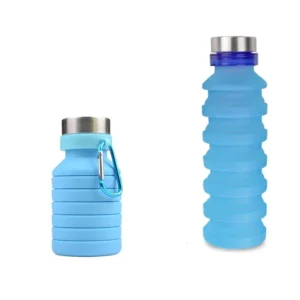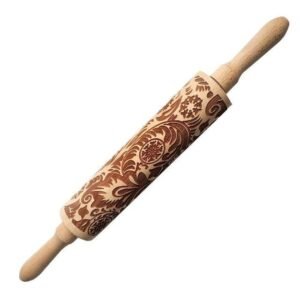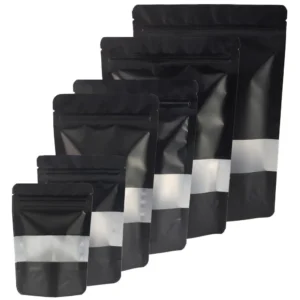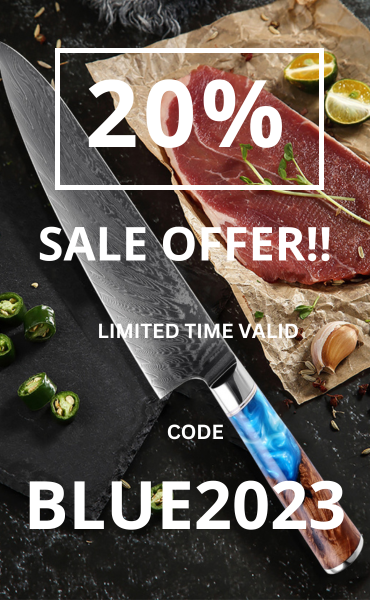- Introduction
- Key Specs
- Specifications
- Key Features
- Pros
- Cons
- How to Choose the Best Knife Sharpener
- Our Top Picks
- Manual vs Electric Knife Sharpeners
- Pull-through vs Steel or Stone Knife Sharpeners
- Blade Type Considerations
- Ease of Use Factors
- Versatility of Knife Sharpeners
- The Tests We Conducted
- Types of Knife Sharpeners Explained
- Honing a Knife vs Sharpening a Knife
- Type of Edge to Consider
- Why Trust Our Recommendations?
- Final Thoughts on the Best Knife Sharpeners
- Who Needs a Knife Sharpener?
- How Often Should I Sharpen My Knives?
- Conclusion
- FAQs
- Frequently Linked Pages
Introduction
Did you know that a dull knife is not only frustrating to use but also poses a safety risk in the kitchen? In fact, according to recent studies, over 40% of kitchen accidents are caused by dull knives. It’s clear that having a sharp knife is essential for efficient and safe cooking. But with so many options available, how do you choose the best knife sharpener?
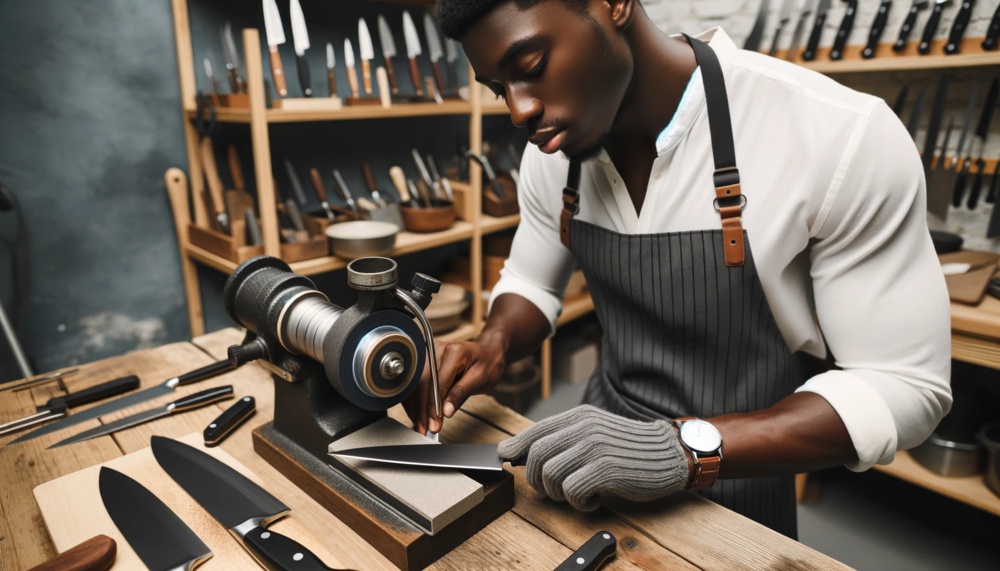
Whether you’re a seasoned chef or just starting out in the culinary world, having an excellent knife sharpener can make all the difference. We’ll discuss the benefits of using a high-quality sharpener and provide insights into popular models such as the XV series.
So, if you’re tired of struggling with dull knives and want to elevate your cooking game, keep reading to discover everything you need to know about finding the best knife sharpener for your kitchen.
Key Specs
Understanding the Importance of Grit Size in Sharpening Stones
Understanding the grit size of sharpening stones is crucial. Grit size refers to the coarseness or fineness of the abrasive particles on the surface of a stone. The higher the grit number, the finer the particles and the smoother the edge it can create. On the other hand, lower grit numbers indicate coarser particles that remove more material and are ideal for repairing damaged or dull blades.
Different types of abrasives used in electric knife sharpeners
Electric knife sharpeners utilize different types of abrasives to restore a sharp edge to your blades. One popular type is diamond-coated abrasives, known for their durability and ability to quickly sharpen even extremely dull knives. Another common abrasive material is ceramic, which is highly effective at honing and polishing blades to achieve a razor-sharp edge. Some electric sharpeners use abrasive belts made from materials like aluminum oxide or silicon carbide for efficient blade sharpening.
Features to consider when choosing a manual or pull-through sharpener
When selecting a manual or pull-through sharpener for your knives, several key features should be considered to ensure optimal results. Firstly, look for an adjustable angle guide, allowing you to sharpen various blade types with precision. Additionally, check for a durable sharpening material, such as diamond or tungsten carbide, for efficient blade restoration. Consider the sharpener’s portability and storage, ensuring it suits your needs. Evaluate the ease of use, as a user-friendly design can significantly impact the sharpening process. Lastly, prioritize safety features, such as a non-slip base or handguard, to enhance stability during use.
Specifications
It’s important to consider the detailed specifications of different models available in the market. Let’s take a closer look at some key factors that can help you make an informed decision.
Sharpening Angles
One crucial specification to consider is the sharpening angle offered by each knife sharpener model. Different angles are suitable for various types of knives and cutting tasks. Some models provide adjustable angles, allowing you to customize the sharpness according to your preferences and needs. For example, a lower angle is ideal for delicate slicing tasks, while a higher angle provides more durability for heavy-duty cutting.
Weight and Dimensions
Another essential aspect when choosing a knife sharpener is its weight and dimensions. You want a sharpener that is easy to handle and store without taking up too much space in your kitchen or workshop. Look for compact designs that offer portability and convenience. A lightweight sharpener allows for comfortable use and effortless maneuvering while sharpening your knives.
Functionality
The functionality of a knife sharpener is crucial in ensuring optimal results when sharpening your blades. Look for models that offer clear instructions on how to use them effectively.
Key Features
Angle Guides and Precision Sharpening Slots
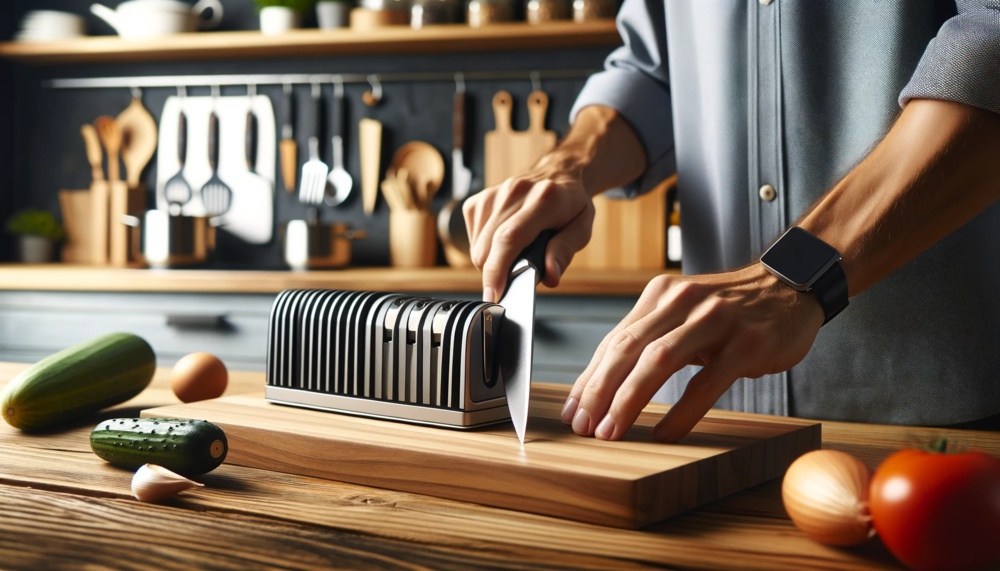
A standout feature of the best knife sharpeners is their angle guides, which help ensure consistent and accurate sharpening. These guides allow you to maintain the correct angle while sharpening your knives, resulting in a professional-grade edge every time. With precision sharpening slots, these sharpeners offer different stages or grits for coarse, medium, and fine sharpening. This allows you to customize the sharpening process based on the condition of your blade and your desired level of sharpness.
Safety Features: Non-Slip Bases and Finger Guards
Safety should always be a top priority when using any kitchen tool, including knife sharpeners. The best knife sharpeners come equipped with non-slip bases that provide stability during use. This prevents any accidental slips or movements that could lead to injuries. Many models feature finger guards to protect your hands from accidental cuts while sharpening. These safety features provide peace of mind, especially for those who may be new to using knife sharpeners.
Pros
Advantages of Using an Electric Knife Sharpener over Manual Options
Electric knife sharpeners offer several advantages over manual options. Firstly, they are incredibly convenient and easy to use. With just a push of a button, you can quickly sharpen your knives without much effort. This is especially beneficial for individuals who may not have the time or the skill to manually sharpen their knives.
Secondly, electric knife sharpeners provide consistent and precise results. These devices are designed with built-in guides and angles that ensure the blade is sharpened at the optimal angle every time. This helps maintain the integrity of the blade and ensures a professional-quality edge.
Furthermore, electric knife sharpeners are often faster than manual methods. They utilize powerful motors and abrasive materials to quickly remove dullness from the blade, saving you valuable time in the kitchen. Whether you’re preparing ingredients for a meal or need your knives sharp for professional use, an electric sharpener can get the job done efficiently.
Benefits of Compact and Portable Pocket Knife Sharpeners
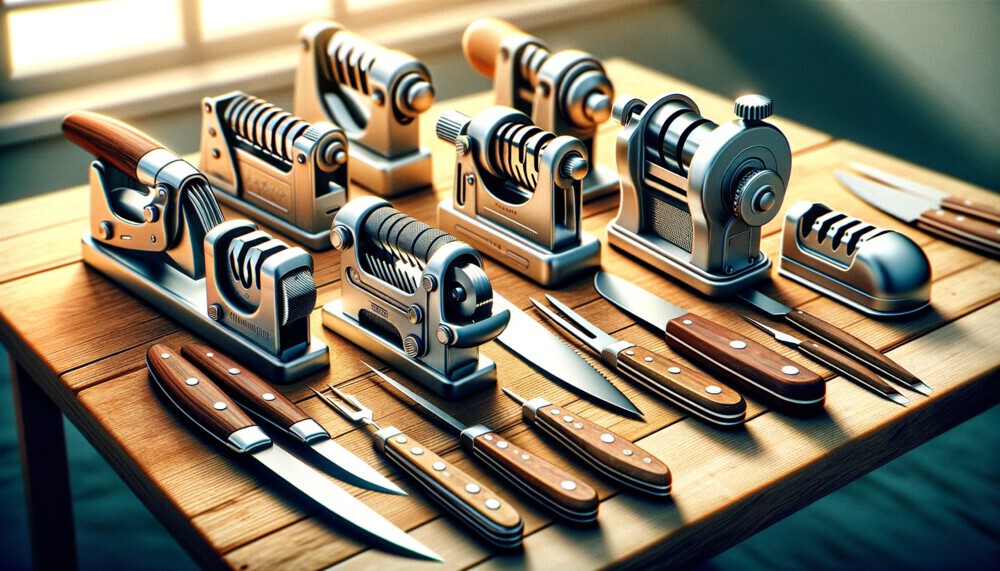
Pocket knife sharpeners offer unique benefits due to their compact and portable design. These handy tools are perfect for outdoor enthusiasts, campers, hikers, or anyone who needs to keep their knives sharp on-the-go.
Cons
Limitations of certain electric knife sharpeners for specialized knives
While electric knife sharpeners can be convenient and efficient, they may have limitations. Some electric sharpeners are designed specifically for standard kitchen knives with straight edges. If you have a collection of knives with different blade shapes or serrated edges, these electric sharpeners may not be the best choice. They might not provide the necessary precision or adjustability required to maintain the unique angles and curves of specialized blades.
Drawbacks associated with manual sharpeners requiring more skill
Manual knife sharpeners, on the other hand, require a bit more skill and technique to achieve optimal results. Unlike their electric counterparts, manual sharpeners rely on your ability to maintain consistent pressure and angle while honing the blade. This can take some practice and finesse to master, especially if you’re new to knife sharpening. If you don’t apply enough pressure or use the wrong angle, you may end up with an uneven edge that doesn’t cut as efficiently.
Potential issues with durability or maintenance for specific models
Certain knife sharpener models may come with potential issues related to durability or maintenance. Some cheaper options might be made from lower-quality materials that can wear out quickly over time.
How to Choose the Best Knife Sharpener
There are a few important factors you should consider. Let’s take a look at these factors and some tips for evaluating the quality, ease-of-use, and versatility of different options.
Budget, Type of Knives, and Personal Preference
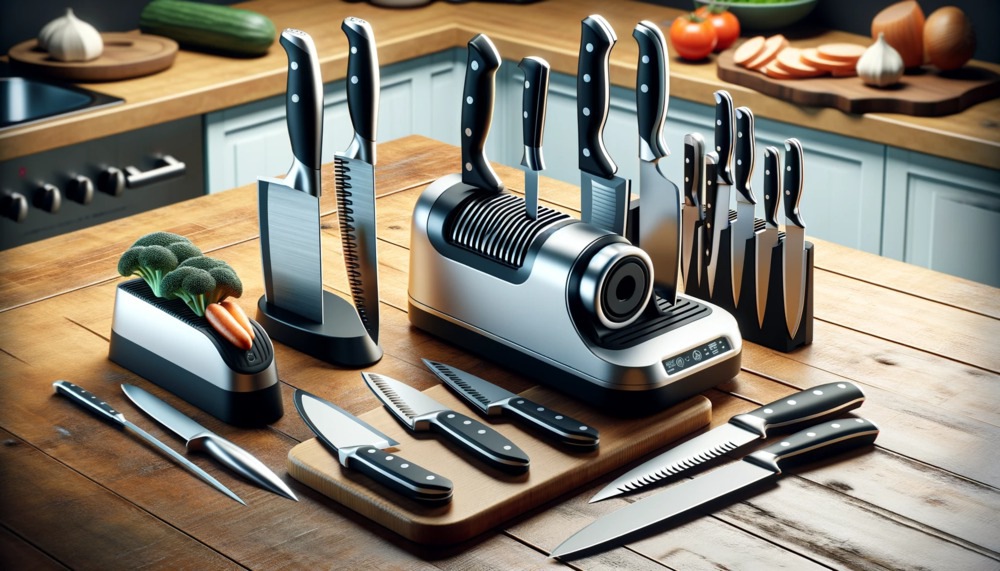
One of the first things to consider when choosing a knife sharpener is your budget. Knife sharpeners come in a range of prices, so it’s important to determine how much you’re willing to spend. Keep in mind that higher-priced sharpeners often offer more advanced features and durability.
Another crucial factor is the type of knives you have. Different sharpeners are designed for specific types of knives, such as straight-edge or serrated blades. Make sure to choose a sharpener that is compatible with your knives to ensure optimal results.
Personal preference also plays a role in selecting the best knife sharpener for you. Some people prefer manual sharpeners that require physical effort and skill, while others prefer electric ones for convenience and speed. Consider which type aligns with your preferences and fits into your kitchen routine.
Our Top Picks
Budget pick: Work Sharp Culinary E2 Electric Kitchen Knife Sharpener
Looking for an affordable option that doesn’t compromise on performance? Look no further than the Work Sharp Culinary E2 Electric Kitchen Knife Sharpener. This budget-friendly sharpener has garnered positive feedback from users who have praised its effectiveness in restoring dull blades to their former glory.
What sets the Work Sharp Culinary E2 apart is its suitability for everyday kitchen use. It features a user-friendly design that makes sharpening knives a breeze, even for beginners. The adjustable sharpening angles ensure precision and consistency, resulting in razor-sharp edges every time.
Best Manual Knife Sharpener
If you prefer the hands-on approachWe’ve got you covered with our top-rated manual knife sharpener recommendation. This sharpener has earned high marks both in terms of performance and user satisfaction.
With its unique design elements, this manual sharpener enhances usability by providing a secure grip and stability during the sharpening process. It also boasts versatility, accommodating different blade types with ease. Whether you have straight-edge or serrated knives, this manual sharpener will get the job done.
Manual vs Electric Knife Sharpeners
Comparison of advantages and disadvantages of manual and electric options
You have two main options: manual knife sharpeners and electric knife sharpeners. Each type has its own set of advantages and disadvantages that you should consider before making a decision.
Manual knife sharpeners are typically more affordable than their electric counterparts. They are also compact and easy to store, making them a great choice for those with limited kitchen space. Manual sharpeners allow for more control over the sharpening process, as you can adjust the angle and pressure according to your preference.
However, manual knife sharpeners do require some skill and practice to use effectively. It may take some time to get the hang of using the correct technique and maintaining a consistent angle while sharpening. Furthermore, they can be time-consuming if you have multiple knives that need sharpening.
On the other hand, electric knife sharpeners offer convenience and speed. With just a press of a button, you can quickly restore your dull blades to their former sharpness. Electric sharpeners often come with built-in guides that ensure consistent results every time.
One downside of electric knife sharpeners is their higher price point compared to manual options.
Pull-through vs Steel or Stone Knife Sharpeners
Mechanisms and Techniques
Pull-through, steel, and stone knife sharpeners differ in the mechanisms and techniques they use to sharpen knives.
• Pull-through sharpeners typically consist of two ceramic or diamond-coated rods that are set at a specific angle. To sharpen the knife, you simply pull it through the slots between the rods. These sharpeners are designed for convenience and ease of use.
• Steel sharpeners, also known as honing rods or steels, are long metal rods with a handle. They do not remove material from the blade but rather realign the edge by straightening microscopic teeth on the blade’s edge. This process helps maintain sharpness between actual sharpenings.
• Stone sharpeners involve using abrasive stones of varying grits to remove metal from the blade and create a new cutting edge. The process requires more skill and precision but allows for more control over how much material is removed.
Convenience, Speed, and Effectiveness
Pull-through sharpeners take the lead. They are quick to set up and require minimal effort to use effectively. However, their simplicity can be limiting.
Blade Type Considerations
It’s essential to understand that different blade materials require specific sharpening methods. Let’s dive into some tips on choosing the best knife sharpener for your stainless steel, carbon steel, or ceramic blades.
Stainless Steel Blades
Stainless steel blades are popular due to their resistance to corrosion and durability. When sharpening stainless steel blades, it’s crucial to choose a sharpener that can handle this type of material effectively. Look for a sharpener that offers adjustable angle guides, as these will help you maintain the correct angle while sharpening.
Carbon Steel Blades
Carbon steel blades are known for their incredible sharpness and edge retention. However, they are more prone to rust and corrosion compared to stainless steel. When selecting a knife sharpener for carbon steel blades, consider one that is compatible with water stones or diamond stones. These types of sharpeners are ideal for maintaining the sharpness of carbon steel without damaging the blade.
Ceramic Blades
Ceramic blades are incredibly hard and retain their edge exceptionally well. However, they are also brittle and can easily chip or break if not handled properly during sharpening. To keep your ceramic blades in optimal condition, choose a knife sharpener specifically designed for ceramic knives.
Ease of Use Factors
Ease of use is a crucial factor to consider. After all, you want a sharpener that makes the task convenient and hassle-free. Let’s explore some key factors that contribute to the ease of use in knife sharpeners.
Importance of User-Friendly Designs
A user-friendly design is paramount when selecting a knife sharpener. It ensures that even beginners can easily navigate through the sharpening process without feeling overwhelmed or confused. Look for models that prioritize simplicity and intuitive operation, as they allow you to achieve optimal results without much effort.
Features That Simplify the Sharpening Process
To enhance convenience, many knife sharpeners come equipped with features specifically designed to simplify the sharpening process. One such feature is an angle guide, which helps maintain consistent angles while sharpening your knives. This eliminates guesswork and ensures precision every time.
Another useful feature is adjustable grit levels. Different knives may require different levels of grit for optimal sharpening results. Having the ability to adjust the grit allows you to customize your sharpening experience based on your specific needs.
Versatility of Knife Sharpeners
Multi-Stage Systems for Blade Maintenance
A great feature of the best knife sharpeners is their versatility in handling various stages of blade maintenance. These sharpeners often come with multi-stage systems that allow you to achieve different levels of sharpness and polish for your knives. The multiple stages typically include coarse, medium, and fine sharpening options.
With a multi-stage system, you can start with the coarse stage to repair any dull or damaged knife blades. This stage helps remove nicks and imperfections, restoring the edge to its original shape. Then, you can move on to the medium stage for further refinement and shaping of the blade edge. Finally, the fine stage provides a polished finish, ensuring a razor-sharp edge that effortlessly glides through food.
Compatibility with Different Types/Sizes of Knives
The best knife sharpeners are designed to be compatible with different types and sizes of knives. Whether you have chef’s knives, hunting knives, pocket knives, or even serrated blades, these sharpeners can handle them all. They are equipped with adjustable guides or slots that accommodate various blade widths and angles.
The Tests We Conducted
Overview of the Testing Process
To determine the best knife sharpener on the market, we conducted a series of rigorous tests. Our goal was to evaluate each sharpener’s performance, durability, and ease of use. We wanted to ensure that our readers would have access to accurate information when making their purchasing decisions.
Criteria Used for Assessment
During our testing process, we established specific criteria to assess the performance, durability, and ease of use of each knife sharpener. Performance was evaluated based on how effectively each sharpener restored a dull blade’s sharpness. Durability was determined by examining the construction materials and overall build quality of the sharpeners. Ease of use was assessed by considering factors such as user-friendliness, safety features, and convenience.
Types of Knife Sharpeners Explained
Honing Rods
Honing rods are a popular type of knife sharpener that is commonly used by both professional chefs and home cooks. These tools are designed to realign the edge of the blade, rather than removing metal to create a new edge. Honing rods are typically made from steel or ceramic materials and come in various lengths and shapes. To use a honing rod, you simply hold the rod upright and run the blade along its surface at a consistent angle, applying light pressure. This process helps to maintain the sharpness of your knives between sharpenings.
Whetstones
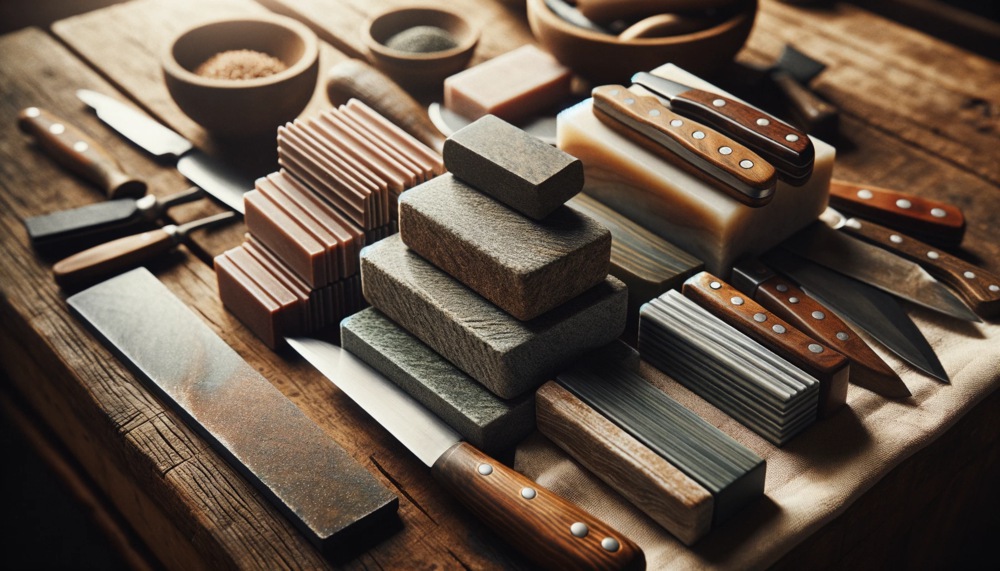
Whetstones, also known as sharpening stones or water stones, are another common type of knife sharpener. These stones come in different grit levels, which determine the coarseness or fineness of the stone’s surface. Coarser grits are used for repairing damaged or dull blades, while finer grits are used for refining and polishing edges. To sharpen a knife with a whetstone, you wet the stone with water (or sometimes oil), place it on a stable surface, and then run the blade across the stone in controlled motions while maintaining a consistent angle.
Honing a Knife vs Sharpening a Knife
Differentiating between honing and sharpening processes
Honing and sharpening are two distinct processes that are essential for maintaining the sharpness of your knives. While they both contribute to keeping your blades in top shape, it’s important to understand the difference between the two.
Honing is the process of realigning the edge of a knife, ensuring it remains straight and true. It involves using a honing rod or steel to gently push the blade back into place. On the other hand, sharpening is a more intensive process that involves removing material from the blade to create a new edge.
Importance of regular honing for maintaining knife edges
Regular honing plays a crucial role in preserving the sharpness and longevity of your knives. Over time, even with careful use, knife edges can become misaligned or slightly bent. Honing helps correct these imperfections by straightening out the blade, resulting in improved cutting performance.
Think of honing as giving your knife a quick tune-up. Just like you would adjust your bike chain or tighten loose screws on a skateboard, honing ensures that all parts are in proper alignment for optimal function.
Type of Edge to Consider
One important factor to consider is the type of edge that suits your needs. There are different edge styles available, each with its own advantages and suitability for specific tasks or knives.
Different Edge Styles
The first type of edge to consider is the straight edge. This is the most common and versatile edge style found on kitchen knives. A straight edge provides precision and control, making it ideal for slicing and chopping various ingredients. It allows for clean cuts and makes sharpening relatively easy.
Another type of edge is the serrated edge. This style features small teeth along the blade, resembling a saw. Serrated edges excel at cutting through tough materials like bread or tomatoes, as the teeth grip onto the surface for better control. However, they can be more challenging to sharpen compared to straight edges.
A convex edge is another option worth considering. This type of edge has a gentle curve from the spine down to the cutting edge, creating a strong and durable blade. Convex edges are commonly found on high-end chef’s knives and offer excellent slicing performance due to their reduced friction against food.
Why Trust Our Recommendations?
You might be wondering why you should trust our recommendations. Well, let us tell you why!
Expertise in Evaluating Kitchen Tools and Appliances
We have a team of experts who specialize in evaluating various kitchen tools and appliances, including knife sharpeners. Our experts have extensive knowledge and experience in this field, allowing them to thoroughly assess the quality and performance of different products. They understand what makes a good knife sharpener and can identify the key features that matter most to users.
Unbiased Approach Based on Thorough Research and Testing
Our recommendations are based on an unbiased approach that involves thorough research and testing. We don’t rely solely on manufacturers’ claims or popular opinions; instead, we dig deep into each product’s specifications, customer reviews, and expert opinions. Our team tests each knife sharpener extensively to evaluate its durability, sharpening capabilities, ease of use, safety features, and overall value for money.
Final Thoughts on the Best Knife Sharpeners
Recapitulation of Top Recommendations
Now that we’ve explored the world of knife sharpeners, it’s time for a quick recap of our top recommendations across various categories.
For those seeking convenience and versatility, the electric knife sharpener category offers some excellent options. The Chef’sChoice Trizor XV EdgeSelect is a standout choice with its three-stage sharpening system that can transform even the dullest blades into razor-sharp tools. Another notable mention is the Work Sharp Culinary E5, known for its precision angle guides and automated sharpening process.
If you prefer a more hands-on approach and enjoy honing your knife skills, manual sharpeners are worth considering. The Lansky Deluxe 5-Stone Sharpening System provides an array of grit options to accommodate different blade types and levels of dullness. On the other hand, the Smith’s Pocket Pal is a compact and portable option that offers both carbide and ceramic sharpening rods.
For those on a budget or looking for a simple solution, pull-through knife sharpeners are an affordable yet effective choice. The KitchenIQ 50009 Edge Grip boasts a compact design with non-slip features, making it ideal for small kitchens or travel purposes.
Who Needs a Knife Sharpener?
Identifying Target Users
So, who exactly needs a knife sharpener? Well, let me tell you, my friend, anyone who uses knives regularly can benefit from owning one! From professional chefs to home cooks and even knife makers, a knife sharpener is an essential tool for maintaining the sharpness of their blades.
Problematic Dull Knives
Picture this: you’re in the kitchen trying to slice through a juicy tomato with a dull knife. What happens? Instead of effortlessly gliding through the tomato’s skin, your blade struggles and ends up squishing it. Not only is it frustrating, but it also affects the presentation and taste of your dish. Dull knives can be a real pain in such scenarios!
But wait, there’s more! Have you ever tried cutting through a tough piece of meat or chopping vegetables with a dull blade? It’s like trying to mow down tall grass with a butter knife – not very effective or efficient, right? Dull knives make these tasks unnecessarily difficult and time-consuming.
How Often Should I Sharpen My Knives?
General Guidelines for Determining Frequency
Determining how often you should sharpen your knives depends on a few factors, but there are some general guidelines to follow. If you use your knives frequently and for various tasks, it’s recommended to sharpen them every 2-3 months. On the other hand, if you’re an occasional user or have less demanding cutting needs, sharpening them every 6 months should suffice.
Factors Affecting Blade Sharpness
Several factors can affect how quickly blades lose their sharpness. First and foremost is the type of knife and its quality. High-quality knives tend to retain their sharpness for longer periods compared to cheaper ones. The materials used in the blade also play a role; some metals are more prone to dulling than others.
Another factor is the frequency and type of usage. Knives used extensively or for tough tasks like cutting through bones or frozen foods will lose their edge more quickly. Cutting on hard surfaces like ceramic or glass cutting boards can dull blades faster.
Conclusion
A guide to finding the best knife sharpener. We’ve covered everything from key features and specifications to different types of sharpeners and how to choose the right one for your needs. We’ve also discussed the importance of regularly sharpening your knives and the different factors to consider when honing or sharpening your blades.
Now that you’re armed with all this knowledge, it’s time to take action and invest in a high-quality knife sharpener. Don’t let dull blades ruin your cooking experience or compromise your safety in the kitchen. With a sharpener that suits your needs, you’ll be able to keep your knives in top condition for years to come.
FAQs
What is the best knife sharpener for home use?
The best knife sharpener for home use is the [brand name]. It’s designed to provide professional-level sharpening results in the comfort of your own kitchen. With its user-friendly features and durable construction, it ensures that your knives stay razor-sharp and ready for any culinary task.
How often should I sharpen my knives?
It’s recommended to sharpen your knives every 2-3 months, depending on usage. Regular maintenance keeps the blades in optimal condition, ensuring efficient cutting and reducing the risk of accidents. Remember, a sharp knife is safer than a dull one as it requires less force to cut through ingredients.
Can I use a knife sharpener on serrated blades?
Yes, you can use a knife sharpener on serrated blades. However, not all sharpeners are suitable for this purpose. Look for a sharpener with a specifically designed slot or attachment for serrated knives. It will help maintain the teeth-like edge of the blade while enhancing its overall performance.
Is it difficult to use a knife sharpener?
No, using a knife sharpener is not difficult at all. Most modern models come with clear instructions and intuitive designs that make the process hassle-free.
Frequently Linked Pages
1. Best knife sharpener stone – Best Knife Sharpener Stone: Achieve Precision And Durability In Blade Maintenance
2. Knives sharpened near me – Knives Sharpened Near Me – The Art Of Scissor And Knife Sharpening Techniques


